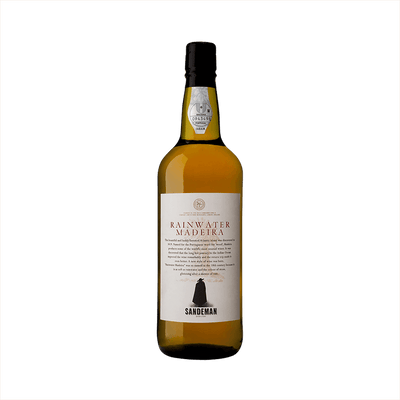Madeira
What is Madeira?
Madeira is a distinctive Portuguese fortified wine that stands out among Other Specialty wines for its unique production method involving controlled oxidation and heating. This wine comes exclusively from the volcanic Madeira Islands off the coast of Morocco, where it's aged using either the traditional canteiro method (slow aging in warm attics) or the estufagem process (controlled heating in tanks). What truly defines Madeira is its remarkable ability to withstand heat and oxidation—qualities that would ruin most wines but instead create Madeira's signature nutty, caramelized flavors and virtually indestructible character that can last for centuries once opened.
Learn More About Madeira
What makes Madeira unique?
Madeira stands apart from other fortified wines through its distinctive estufagem heating process, where the wine is deliberately exposed to temperatures up to 130°F for months, mimicking the conditions of long sea voyages that accidentally created this style centuries ago. This controlled heat treatment, combined with deliberate oxidation, gives Madeira its characteristic caramelized, nutty flavors and remarkable longevity - bottles can remain drinkable for decades or even centuries after opening. Unlike other fortified wines that deteriorate quickly once exposed to air, Madeira actually benefits from oxidation, making it virtually indestructible and completely unique among the world's wines.
How is Madeira made?
Madeira production begins with fermenting local grape varieties like Sercial, Verdelho, Bual, and Malmsey, then fortifying the wine with neutral grape spirit at different stages depending on the desired sweetness level. The fortified wine then undergoes the unique estufagem process, where it's heated to temperatures between 104-122°F for several months in temperature-controlled tanks or aged in wooden casks stored in warm lodge attics. This controlled heating process, combined with oxidation over years of aging, creates Madeira's distinctive caramelized flavors and remarkable stability that allows the wine to last indefinitely once opened.
How do you drink Madeira?
Madeira shines brightest when sipped neat at room temperature, allowing its complex nutty and caramelized flavors to unfold naturally on your palate. While some enjoy it slightly chilled, adding ice tends to dilute its concentrated richness, so most aficionados skip the rocks entirely. In cocktails, Madeira works beautifully in classic preparations like the Boston Flip or Madeira Cobbler, where its fortified wine character adds depth to egg-based drinks and fruit-forward compositions.
How do I choose a good Madeira?
Start by considering the sweetness level that matches your intended use—dry Sercial works beautifully in cocktails where you want wine complexity without added sugar, while sweeter Malmsey or Bual varieties shine in dessert-style drinks or as a rich base for winter warmers. Age matters too, but don't automatically reach for the oldest bottle; a well-made 5-year Madeira often provides better value and more vibrant acidity than pricier vintage options, especially when mixing. If you're planning to sip it neat, invest in something with at least 10 years of aging, but for cocktail work, focus on finding a producer known for consistent quality rather than chasing impressive age statements.
Nutritional Information
Typical Calorie Range per Ounce: 35-40 calories
Typical Carbohydrate Range per Ounce: 3-6 grams
Typical Sugar Range per Ounce: 2-5 grams
Typically Gluten Free: Yes
Madeira wine is made from grapes and follows traditional winemaking processes, making it naturally gluten-free. The calorie and sugar content varies depending on the style - drier varieties like Sercial contain fewer calories and less sugar, while sweeter styles like Malmsey pack more of both. Always check the specific product label and consult with the producer if you have celiac disease or severe gluten sensitivity to confirm gluten-free status.
Scrolled this far? Your reward? Madeira Trivia!
- Madeira wine literally survived the Titanic disaster. When the ship sank in 1912, a case of 1896 Malmsey Madeira went down with it. Nearly a century later, deep-sea explorers recovered bottles from the wreckage, and incredibly, the wine was still perfectly drinkable. The extreme cold and pressure at the ocean floor actually helped preserve it, proving that Madeira's reputation for immortality isn't just marketing hype.
- George Washington used Madeira to toast the signing of the Declaration of Independence, and it wasn't just any bottle – it was the most expensive wine in colonial America. A single bottle cost more than most people earned in a month. The Founding Fathers were so obsessed with Madeira that they imported over 25% of all wine consumed in the American colonies from this tiny Portuguese island.
- Madeira gets its unique flavor from being deliberately heated and oxidized, which would destroy any other wine. The process, called estufagem, literally bakes the wine in hot tanks or rooms for months at temperatures that would make a sommelier weep. This "cooking" method was discovered by accident when wines stored in ship holds during long ocean voyages through tropical climates turned out better than the ones that stayed home.
- The phylloxera epidemic that destroyed European vineyards in the 1800s actually made Madeira better. When the island replanted with American rootstock, winemakers discovered that the new vines produced grapes with more concentrated flavors. What seemed like a catastrophe became an upgrade that modern Madeira producers still benefit from today.
- Napoleon Bonaparte demanded Madeira wine during his exile on the island of Saint Helena, but he specifically requested it be from his enemy's homeland – Britain's favorite Portuguese colony. The irony gets deeper: Napoleon's daily Madeira ration was paid for by the British government, meaning his captors were literally buying him the finest wine from their own trading partners while keeping him prisoner.
Higher-proof spirits can be intense. Mix carefully, taste thoughtfully, and enjoy responsibly.
Gift message (optional)

